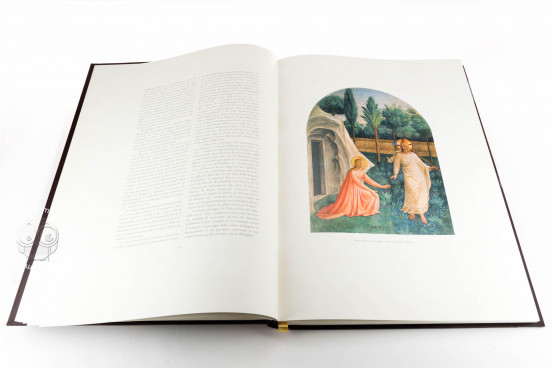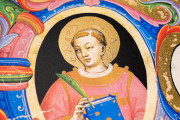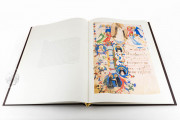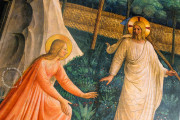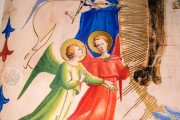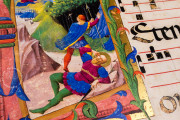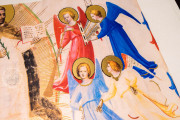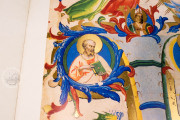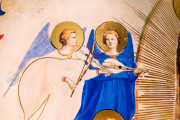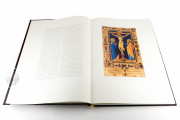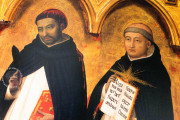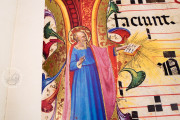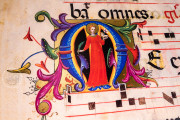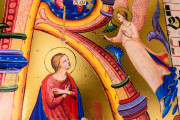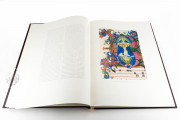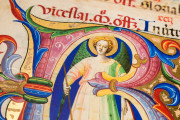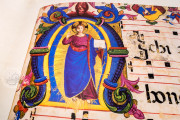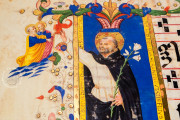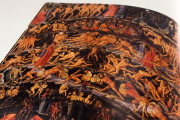The manuscript known as the Beato Angelico's Missal, today preserved at the Museo Nazionale di San Marco in Florence, was created around 1425-1430. It collects the texts of the chants to be officiated during the Mass in the feasts of various Saints. The decorative apparatus has been attributed to one of the fathers of the Florentine Renaissance, the Dominican friar and Italian painter Giovanni da Fiesole, better known as Fra Angelico or Beato Angelico.
The Decorative Apparatus: from Gothic to Renaissance
This manuscript stands as a pinnacle of artistic expression, capturing the essence of its era—a time straddling the waning Gothic and the dawning Renaissance. Within its pages, it houses a collection of thirty ornate initials adorned with vivid scenes, figures, and margin-spanning friezes, alongside three initials solely graced with leafy motifs, and numerous others penned in blue or red with delicate filigree work. Its decoration strikes a balance between richness and restraint; on some pages, the frieze artfully encloses the text on two sides, while on others, it is the figures themselves that gracefully unfold.
Reflecting the popular style of Florentine miniature art in the early fifteenth century, this codex marries the lingering Gothic influence with the emerging Renaissance ideals of order, symmetry, and classical beauty. The color palette is a study in sophistication, with hues of chromatic blue, red, green, grey-lilac, and salmon pink, set against a backdrop of elongated acanthus leaves and tendrils that host an array of animals and figural medallions.
From Fiesole to Florence
The manuscript's documented journey begins in the mid-nineteenth century, when it made its way to the Museo Nazionale di San Marco in Florence, founded in 1869. It had previously resided in the Biblioteca Nazionale following its tenure at the Biblioteca Palatina. The lineage of the manuscript is thought to trace back to the Convent of San Domenico in Fiesole, a belief bolstered by its association with Beato Angelico. Indeed, the work is believed to stem from Angelico's earlier years, a period that coincides with his sustained residency at Convent of San Domenico.
We have 1 facsimile edition of the manuscript "Beato Angelico's Missal": Messale del Beato Angelico facsimile edition, published by Vallecchi, 2005
Request Info / Price
